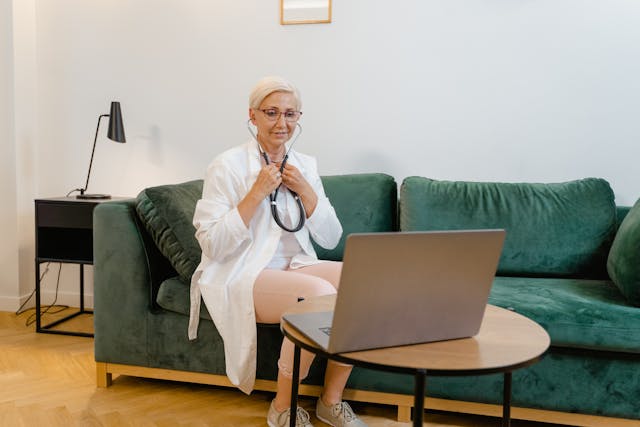
Remote patient care monitoring is changing how chronic conditions are managed. It provides real-time tracking of patient information, allowing healthcare providers to give more personalized care. As a result, this technology can enable those with long-term conditions to see better health results and quality of life. For chronic conditions, the following seven key benefits of remote patient care can be listed.
1. Improved Patient Engagement
Remote monitoring allows patients to get data on their health situation in real time and also gives patients more control over their treatment. Patients are willing to adhere to treatment advice and changes because they can see how any of their lifestyles will affect the outcomes in real-time. The outcome is that people get into the participant game and improve on medication and therapy adherence as they learn how their behaviors affect them. This is why if patients are included in the monitoring process, satisfaction will increase, and the patients will be healthier as well.
2. Continuous Health Monitoring
Chronic condition management is a very valuable commodity because you are constantly able to monitor patients while they are at home. The constant data stream, however, provides healthcare providers with a way to see early warning signs that problems are beginning to crop up before they get any worse. Such treatment requires monitoring patients around the clock, as providers can adjust treatments just as they receive them in real time to manage conditions like hypertension, diabetes, or heart disease. But this proactive aspect leads to better health outcomes or, rather, the number of people needing emergency interventions reduced.
3. Reduced Hospital Readmissions
Remote patient monitoring is of great importance in reducing hospital readmissions to track patients’ conditions remotely. Early detection of potential problems means that changes can be prepared to treatment plans before an issue becomes a matter of emergency. A proactive care approach not only does better for patients but also lightens the load on hospital resources. Through remote monitoring, we choose to address health concerns before they become serious, which aids in reducing rehospitalization and a much smoother recovery process for patients.
4. Personalized Care Plans
Through remote patient monitoring systems, individual data can be collected, and healthcare providers can create very personalized care plans. A provider is able to track a patient’s health metrics in real-time, see trends, and timely adjust treatments. This means that care is built around the individual needs and progress of each patient so that the kind of care that’s right for each person is more precise and will be more effective at managing chronic disease. It is more responsive, targeted interventions that result from being able to refine care based on individual data that not only translate into better patient outcomes but also translate into more responsive care informed by individual data.
5. Convenience for Patients
Remote patient care monitoring is incredibly convenient for people with chronic conditions that require regular doctor visits. With health data controlled by hand, patients can get the same type of care even when they aren’t present, thereby eliminating the need for in-person visits at set intervals. This is especially useful for those who have mobility issues or are residing in a remote area where replacing batteries is an easy and stress-free process since it saves you precious time and stress traveling to and from the exchange. Ultimately, chronic care management through remote monitoring is good for patient comfort while maintaining high-quality care.
6. Enhanced Provider Efficiency
Healthcare provider efficiency is increased through the capability of remote patient monitoring to get real-time patient data quickly. This enables providers to focus on patients who need immediate care and perform regular check-ins more effectively. In reducing time spent on less critical tasks, providers can better manage resources and their use to benefit from better chronic condition management and better overall patient outcomes. This efficiency doesn’t only improve efficiency for the healthcare system but enables higher quality in the care provided to patients.
7. Better Health Outcomes
Remote patient care monitoring is a big player in drastically improving health outcomes, especially for those who suffer from chronic conditions. Early detection of disease and continuous monitoring allows us to intervene early and greatly reduce complications and management of disease. Real-time data-based care plans, with input from patients, can help patients better control their health. A proactive approach not only helps to keep people healthy over time but also helps to maintain a better quality of life by lessening the impact of chronic disease and avoiding serious health declines.
Conclusion
Remote patient care monitoring offers several benefits that can improve the management of chronic conditions. What that leads to is improved engagement, convenience for patients, and better health outcomes. Healthcare providers need to improve care quality and optimize provider efficiency by incorporating remote monitoring into their chronic care strategies.
